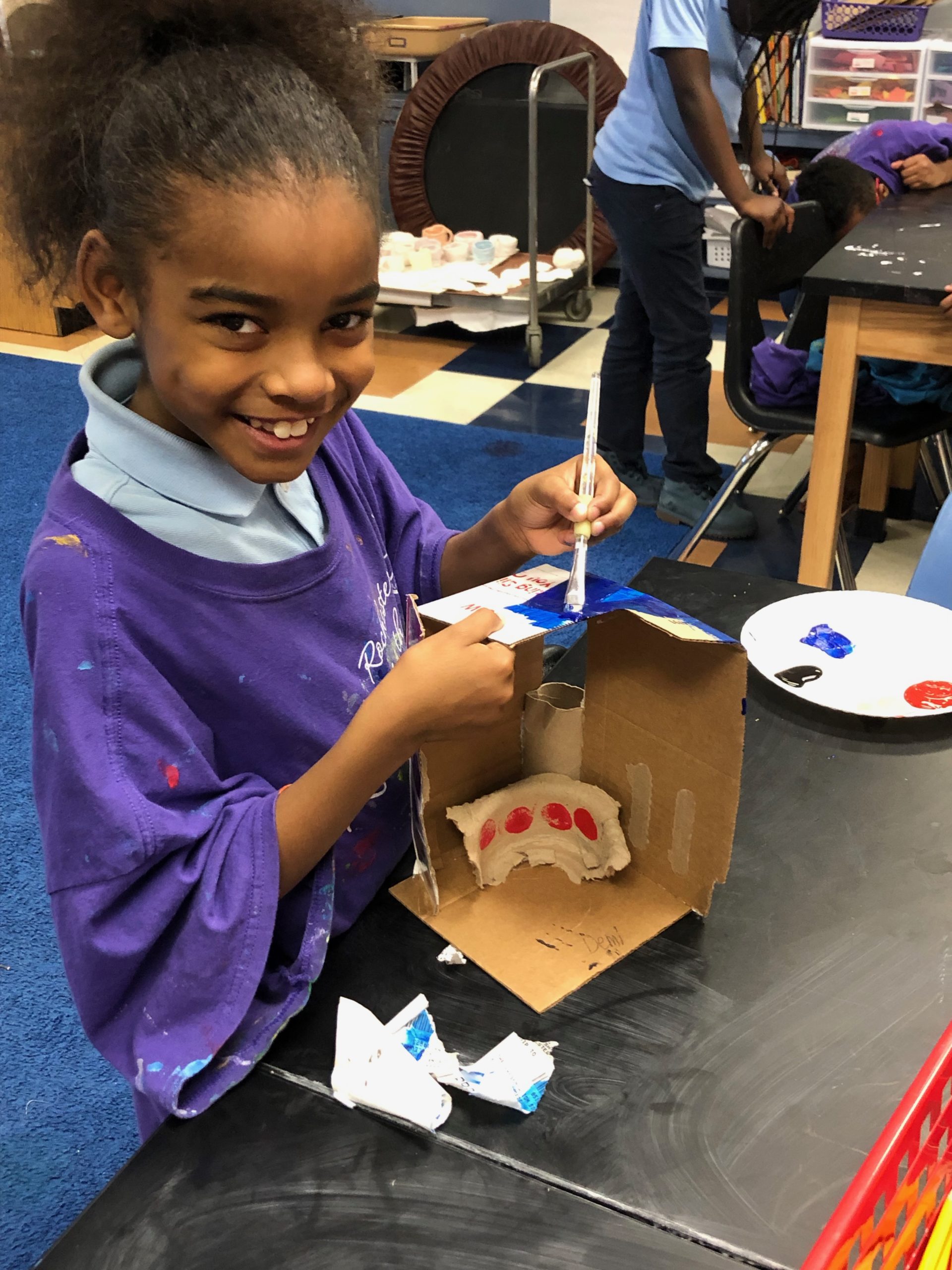
LEARNING: In this project, student artists learn about four different artists who faced mental or physical challenges and turned these challenges to their advantage.
CREATING: Student artists are tasked with creating a sculpture, but as they create they are faced with a series of challenges that they have to work through.
CONNECTING: This project is part of our ‘Art & Literacy Curriculum’. You are welcome to use it independently, and it is easily adaptable to use across multiple grades. However, it was designed to support the topic ‘embracing challenges’, which is often found in 3rd grade ELA curricula, and ‘Human Rights’, found in many 5th grade ELA curricula. Text sets and vocab are pulled for 3rd and 5th grade students.
Specifically, this project addresses the idea of overcoming challenges through initiative, creative problem solving, and perseverance. Through books, conversation, and reflection, students dig deeper into some of the human rights issues that would have effected the artists they study in this unit.
Scope & Sequence:
Lesson 1: SW learn about Judith Scott, an artist born with down syndrome who created abstract fiber sculptures; they then use found or recycled materials to begin building a sculpture.
Lesson 2: SW learn about the artist Chuck Close, who is has a mental disorder called ‘Face Blindness’ as well as paralysis later in life; they then use found or recycled materials to begin building a sculpture.
Lesson 3: SW learn about the artists Wassily Kandinsky who had synesthesia (heard colors); they then participate in a color mixing challenge.
Lesson 4: SW learn about Yayoi Kusama, a Japanese artist known for immersive installations full of patterns and bright colors who states that her art is primarily inspired by her hallucinations; they then have time to paint their sculpture.
Lesson 5: SW have a fifth day for adding a layer of paint to their sculpture and refining their work.
Lesson 6: Optional: a final day for finishing.
(you can preview the first lesson in a project without enrolling by clicking on ‘lesson 1’ above).




Art Elements:
form, color, value, texture
Art Principles:
Pattern, proportion/scale, balance

CCS:
SL.3.1b, SL.3.1c., SL.3.2, SL.3.4, SL.3.6, W.3.2
NCAS:
VA:Cr1.1.3a, VA:Cr2.1.3a, VA:Cr3.1.5a, VA:Re.7.1.3a, VA:Re.7.2.3a, VA:Re9.1.3a, VA:Re8.1.1a
Access the project & save it to ‘My Artroom’:
Enroll + Add Printable Lesson Plans
Enroll in the course + access printable lesson plans in your artroom .
